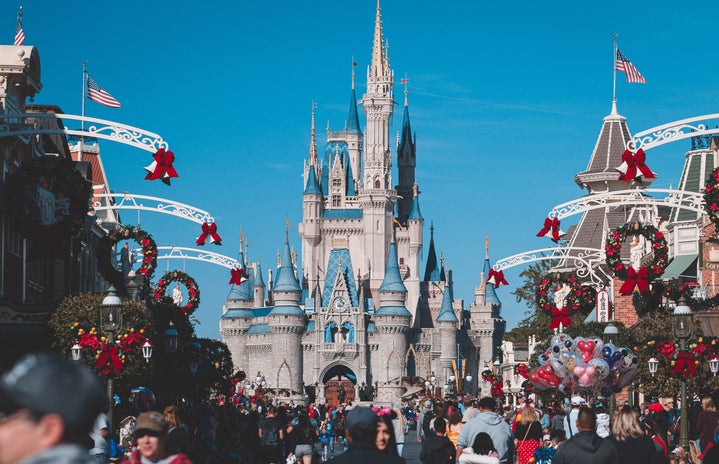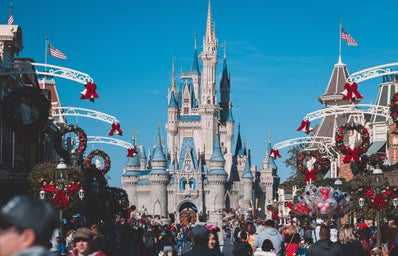If you have read my article on Frozen, you would have perhaps come to the realisation that I am obsessed with Disney, particularly feminist reads on the different plots. Disney has come a long way from perpetuating stereotypes to being much more liberal in their plot themes and character arcs. Let’s trace the evolution of Disney princesses, and how it reflects Disney’s journey of progressiveness.
- Snow White and the Seven Dwarfs (1937)
The first-ever Disney Princess movie, Snow White showcased a female protagonist, the first of its kind. The plot revolves around three things: (1) the evil stepmother, (2) the friendship with the dwarves and (3) the saviour from a prince. While the friendship with the dwarves is enchanting and endearing, the other two plot structures become a staple in Disney Princess films from here on out, and it is inherently misogynistic. Pitting women against one another, and needing a saviour for a damsel in distress will be themes that are regurgitated over the years.
- Cinderella (1950)
Cinderella came out in 1950, right before the second wave of feminism that focused on issues like equality and discrimination. In quick summary: Cinderella is a poor, young girl who is abused and bullied by her step-mother and sisters. More importantly however, she legitimately falls in love with a guy who she gets to know in just a few hours of dancing. There is little to no explanation for her affection other than the fact that he’s a prince.
Some would call her the mother of the rags-to-riches trope, which is really just another rebranding of the damsel in distress genre. We see this power and financial difference across different forms of media, from plays like A Streetcar Named Desire by Tennesse Williams to the K-drama The Heirs. While it can be an accurate portrayal of women’s economic disadvantage, it certainly solidified the cartriture of a character who is in need of a rich husband to save one from troubles.
- Jasmine (1992)
Skipping to the 1990s, we have Aladdin, which features Jasmine. Between the timeframe of 1950 to 1992, we have Sleeping Beauty in 1959, The Little Mermaid in 1989 and Beauty and The Beast in 1991. All three movies don’t deviate much from the evil female antagonist and damsel in distress trope, so they are not much notable for this piece. Aladdin, however, does mark a turn of events.
Jasmine is the daughter that is doted on. For the past 5 movies, the princesses have always been scorned and shunned, and they never really belonged anywhere. Jasmine, however, is securely loved by her father, and even has a pet tiger, a symbol of power. She is a strong character with an adventurous nature, and becomes the first sultana with the legal power to marry whoever she wants. This is much different from the other movies, where the princesses remain secondary to their husbands.
Building on this reversal of roles, her male counterpart, Aladdin, takes on the rags to riches trope. Furthermore, the antagonist here is a man, not a woman, as seen in the previous movies. However, Aladdin was a character that constantly lied and had great affinity for materialism. Did she like him because she pitied him for his poverty? Or was it because she was caged literally and metaphorically? Was her affection real or just an infatuation with something more that she longed for — freedom? We will never quite know, but Jasmine does mark a slight change in Disney’s plot trajectory.
- Meredith (2012)
Before Meredith, we have Pocahontas (1995), Mulan (1998), The Princess and the Frog (2009) and Tangled (2010). The strong character which Jasmine set in place is used repetitively over these few films. Over the course of these few films, we see inclusivity in terms of race: Native American, Chinese and African-American. We see a deviation also for what the strong character is, in that Tiana is mainly portrayed as a business entrepreneur, and her princess title was kind of a side-quest. Nonetheless, all these films do follow the same structure as Jasmine, with strong female protagonists, rags to riches themes and the need for freedom.
Brave, however, gets different. With wild hair, a Scottish accent and a devilish accuracy with her bow, Meredith gives a stunning character impression the minute we get to know her. She is the first female Pixar protagonist, and remains single throughout the film, which is a pioneer move. There is no Prince Charming, and the mother-daughter relationship is explored tentatively with novelty.
However, there is also a heavy emphasis on familial obligation and doing what is best for the family. Heavy debate surrounds whether Brave is a feminist film. For me, her character as a whole is indeed feminist — she knows what she wants, and she gets what she wants on her own. The lack of a male protagonist as her counterpart is indeed notable and applaudable. However, the plot is perhaps not so liberal. It is more a reinstatement of patriarchal values where women have to commit to their families, which is really quite disappointing, that a rebellious girl is once again reined in by familial duty when she could have achieved much more. The plot is more of a let-down for me, than the character.
- Frozen (my favourite) (2013)
Right after Brave comes Frozen and we are introduced to a whole new plot structure by Disney. You can read my article here on how Frozen is a significant turning point in the Disney Princess franchise.
In short, it is the first time Disney explores sisterly love and actually backgrounds the romance. Elsa, in particular, is a landmark character. She is portrayed as dangerous, powerful and formidable. In fact, she is introduced as the villain before we truly understand her. Her discovery of self is refreshing and her bond with Anna is tear-jerking. Even more interesting is that the romance themes were backgrounded mostly for comedic relief, and they don’t add much to the plot in terms of pushing it forward and developing the story. This is a significant change in the plot structures for Disney.
- Raya (2021)
Finally, we reach Raya, from Raya and the Last Dragon. Before this, we have 2 more films of Moana (2016) and Frozen II (2019), and there isn’t really much change in the plot for these 2 films. Moana’s main significance is its inclusivity of Polynesian people and a tribute to their culture and myths.
Raya is the first time Southeast Asia is represented, and it was a pretty exciting atmosphere when it first hit the theatres in Singapore. Raya was significant in its story’s universe-building which uplifted women. For many of the Disney Princess films, they were the centrepieces set in a patriarchal world. However, in Raya, a number of the other leaders of the tribes were women, including Raya herself. It represents the social norms of the film, instead of Raya being an exception, and the changing world as we move towards gender equality. Love and marriage are not in the cards for this film, and most of the time is allocated to exploring loyalty towards her country, adventure and Raya’s own motives. It is speculated that Raya could be queer, but her sexuality is not revealed in the film, and it doesn’t do much to speculate. Raya is instead represented as just a complex human being, not reduced to someone solely stuck on getting married, or even needing a romantic companion.
As we traced Disney’s roots to its modern outlook on women, it is indeed fascinating to see how it reflects the change in times. Disney is a staple in every child’s life, and what it shows on screen shapes how children understand their world. It is wonderful to see Disney move towards a more equitable perspective on women and women’s rights, and that the next generation can grow up on a vastly different diet of stories that we grew up on. Hopefully, this will shape and create a better world.


